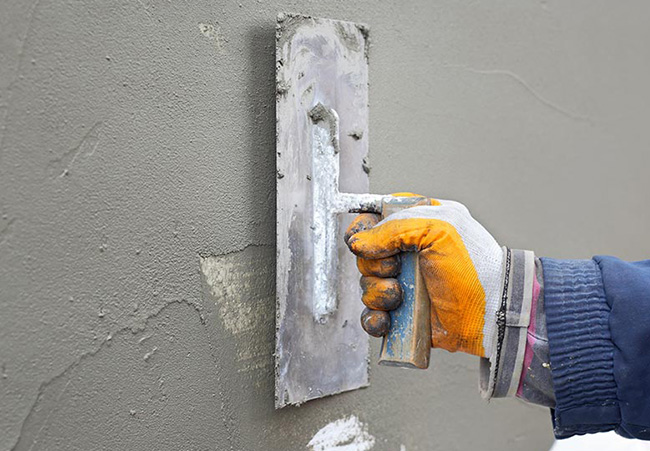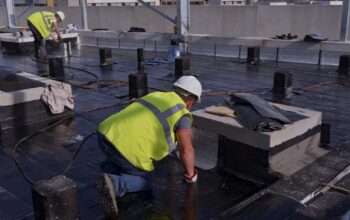Introduction: The Science Behind Stronger Mortars
In the ever-evolving world of construction, the demand for more efficient, durable, and high-performing building materials continues to grow. Among these materials, drymix mortar stands out as a versatile and indispensable component in modern building practices. But behind the exceptional performance of drymix mortar lies a lesser-known yet critical additive — Hydroxypropyl Methylcellulose (HPMC).
Used across various construction formulations, HPMC for drymix mortar plays a pivotal role in enhancing workability, water retention, open time, and adhesion strength. These properties are vital for delivering consistent quality in projects ranging from wall plastering and tiling to insulation and exterior rendering. To understand the role of this powerful additive in detail, this guide explores how it works and why it’s indispensable. For more technical insight, visit this comprehensive article on HPMC for dryHPMC for drymix mortarmix mortar.
What Is HPMC and Why Is It Used?
A Quick Overview of HPMC
Hydroxypropyl Methylcellulose (HPMC) is a non-ionic, water-soluble cellulose ether derived from natural polymers such as cotton linters or wood pulp. It is widely used in various industries including food, pharmaceuticals, cosmetics, and most importantly — construction.
In drymix mortars, HPMC serves as a multifunctional additive that improves the performance of the mix during both application and curing. Its unique chemical properties make it ideal for stabilizing water content, enhancing spreadability, and providing resistance to sagging or cracking.
Key Benefits of HPMC in Drymix Mortar
1. Improved Water Retention
One of the most crucial properties of HPMC is its ability to retain water within the mortar for extended periods. This ensures that cement hydration can occur efficiently, leading to stronger bonds and improved overall durability. In hot or dry climates, HPMC prevents the mix from drying out too quickly, reducing the risk of cracks or weak bonding.
2. Enhanced Workability and Spreadability
Adding HPMC to drymix mortar increases its plasticity and ease of application. This is particularly beneficial for manual plastering or machine-spraying, as the mix flows more smoothly and spreads evenly. Better workability means less labor and a more professional finish.
3. Longer Open Time
HPMC increases the “open time” — the period during which the mortar remains workable before it starts to set. This is particularly important in tiling applications, where workers need sufficient time to align and fix tiles properly without rushing.
4. Anti-Sagging Properties
Mortars used for vertical applications like wall rendering or tile fixing are prone to sagging under gravity. HPMC helps to increase thixotropy — the ability of a material to hold its shape after application — which prevents downward flow and maintains the intended thickness.
5. Improved Adhesion Strength
By enhancing water retention and improving consistency, HPMC helps achieve stronger adhesion between the mortar and substrates such as concrete, brick, or insulation boards. This ensures the longevity and reliability of the structure.
Common Applications of HPMC in Drymix Mortar
Tile Adhesives
Tile adhesives require excellent workability, open time, and bonding strength. HPMC ensures that the mix doesn’t dry too fast, allowing sufficient time for positioning while maintaining adhesion.
Plaster Mortar
In internal and external wall plastering, HPMC improves consistency and helps prevent cracking during curing. It also enhances ease of spreading, resulting in smoother walls.
Self-Leveling Compounds
For self-leveling floors, HPMC helps to control water separation (bleeding), extend flow time, and maintain evenness during curing.
Exterior Insulation and Finish Systems (EIFS)
EIFS mortars benefit from HPMC’s strong bonding and water-retention properties, which are essential for layering insulation materials and exterior finishing.
Repair Mortars
In patch repair work, a stable and reliable mix is key. HPMC offers excellent workability and resistance to shrinkage or sagging, especially in overhead applications.
How HPMC Affects Mortar Composition and Performance
Dosage and Compatibility
While HPMC is typically added in small quantities (ranging from 0.2% to 0.7% by weight of total dry components), its impact on mortar performance is significant. Proper dosage depends on the specific type of mortar, environmental conditions, and desired setting times.
HPMC is compatible with various other additives such as superplasticizers, retarders, and air-entraining agents, making it highly adaptable to different mortar formulations.
Viscosity Grades
HPMC is available in multiple viscosity grades (e.g., 400, 15000, 75000 mPa.s), each serving different functions. Low-viscosity types are suitable for self-leveling compounds, while high-viscosity types provide better sag resistance and water retention for tile adhesives and plasters.
Challenges and Solutions in Using HPMC
Temperature Sensitivity
HPMC gels at high temperatures, which can affect its water retention capacity in hot climates. To mitigate this, manufacturers often blend HPMC with other cellulose ethers or modify its structure to maintain functionality in extreme temperatures.
Mix Homogeneity
Achieving a homogeneous mix is critical. Inconsistent distribution of HPMC can lead to patchy performance. Using industrial mixers and ensuring proper dry blending techniques help in avoiding this issue.
Choosing the Right HPMC Supplier
Selecting the right quality and grade of HPMC is crucial for maximizing the performance of your drymix mortar. Here’s what to look for:
- Consistent product quality
- Technical support and formulation advice
- Availability of various viscosity options
- Compliance with construction standards (ISO, ASTM)
Reliable suppliers not only provide material but also assist in optimizing mortar formulations for different applications and climates.
Conclusion: HPMC as the Backbone of Modern Mortar Technology
In a construction world that values speed, efficiency, and long-term performance, HPMC for drymix mortar has become more than just an additive — it’s a necessity. From improving workability to ensuring strong adhesion and preventing failures, HPMC plays a central role in the durability and success of building projects across the globe.
Understanding its functions, benefits, and proper usage allows builders, engineers, and manufacturers to make smarter decisions and deliver top-tier results. With the right grade and application, HPMC ensures that every layer of mortar contributes to a stronger, longer-lasting structure — making it an unsung hero in the world of construction materials.



